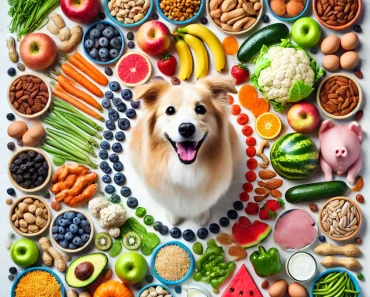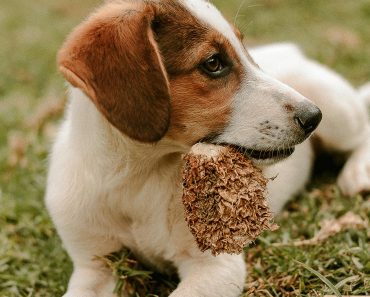Puppy Feeding Chart by Body Weight
These charts help you calculate the proper feeding amount for different types of food, but we recommend feeding your puppy a fresh, well-balanced diet specifically formulated for their needs. This will ensure they get the highest-quality nutrients to support their growth and overall health.
How Often Should Puppies Eat?
The frequency of feeding your puppy depends on their current age and estimated age of maturity. Puppies need more calories than adult dogs, but it’s best to feed them smaller, more frequent meals to help with digestion and keep their energy levels consistent throughout the day.
How Many Times a Day Should You Feed a Puppy?

You can determine the ideal number of meals for your puppy using the chart below. The key is to feed them little and often. Overfeeding in one sitting can lead to bloating, slow digestion, and discomfort.
- 6–12 weeks: Feed your puppy 4 times a day once they are weaned (around 3 to 6 weeks) and transitioned to solid food.
- 3–6 months: Reduce the feeding frequency to 3 meals a day.
- 6–12 months: Feed your puppy twice a day.
When to Feed a Puppy
Establishing a structured feeding routine is an essential part of your puppy’s training. Consistency is important for building habits, and a mealtime routine sets the stage for a well-disciplined puppy.
When should you feed your puppy?
The ideal time to feed your puppy is between 7 a.m. and 5 p.m. Feeding the last meal by 5 p.m. gives your puppy enough time to digest and eliminate before bedtime, helping reduce the risk of accidents during the night.
Use the chart above to calculate how many meals your puppy needs each day, and spread them evenly between 7 a.m. and 5 p.m. Stick to a regular feeding schedule to reinforce the routine.
What Food Can Puppies Eat?
Puppies have different nutritional needs than adult dogs, so it’s crucial to provide them with food specifically designed for their growth. Choosing a puppy food that’s nutritionally balanced for long-term feeding, like a Chicken & White Rice recipe with extra calcium and phosphorus, will give your puppy the right foundation for healthy development.
Keep the Following in Mind
- Read the Label
Nutrition plays a crucial role in your puppy’s long-term health and happiness. Make sure you know exactly what goes into their food by carefully reading the label.
- Keep it Natural
Treats made with whole-food ingredients are the healthiest for puppies. Always check labels to avoid treats that falsely claim to be “healthy” but contain harmful additives.
- Think Soft
Since young puppies have developing teeth, it’s best to choose soft, bite-sized treats that are gentle on their mouths.
- Tailor Treats to Your Pup
When selecting treats, consider factors such as your puppy’s age, weight, health, allergies, and activity level to ensure they get the right snacks.
- Moderation
Giving too many treats can result in obesity and other health issues. Offer treats wisely and in moderation.
- Remember
Treats should make up no more than 5% of your puppy’s daily calorie intake. For example, if your puppy consumes 400 kcals per day, only 20 kcals should come from treats.
Healthy Snack Options
Opt for low-calorie, safe fruits and vegetables, like the following:
- Apples: High in antioxidants and dietary fiber. Always remove the core before feeding.
- Carrots: Puppies love their crunch, and they offer numerous health benefits.
- Blueberries: Packed with vitamins K and C, they make an excellent snack.
- Cranberries: Rich in vitamins, cranberries are a great choice for your puppy.
- Green Beans: Full of vitamins and dietary fiber, green beans are a healthy snack.
- Broccoli: A great source of vitamins C and K for your growing pup.
How to Transition a Puppy to New Food
Transitioning a puppy from mother’s milk or formula to solid food should be done gradually to avoid digestive upset.
- For puppies with their mother: Breeders typically start mixing solid food with mother’s milk as early as three weeks old. The food is often blended with a puppy milk replacer and warm water to help with the transition. Using the same high-quality food the mother eats can help ease this process.
- For orphaned puppies: Weaning begins around 3-4 weeks of age. Small amounts of high-quality soft food designed for healthy growth are introduced, gradually replacing milk formula. By 5-6 weeks, most puppies are eating solid food.
When Can Puppies Eat Solid Food?
Puppies typically start transitioning to solid food at around 3-4 weeks of age, as they begin to require more calories than what their mother’s milk or formula can offer. By 6 weeks, most puppies are fully weaned and eating solid food.
Maintaining a Healthy Weight for Your Puppy with Proper Nutrition
Feeding your puppy a fresh, high-quality diet specifically designed for young dogs ensures they get the nutrients they need to grow and stay healthy. Puppies develop at different rates, so it’s important to monitor their body condition with guidance from your veterinarian.

Preventing Weight Loss in Puppies
If your puppy is losing weight, check that you’re feeding them:
- A nutrient-rich, balanced diet formulated for puppies.
- The correct number of daily calories based on their estimated adult weight, activity level, and breed. Extremely active puppies may require a higher-calorie diet.
- Following the feeding guidelines on the food label.
If your puppy remains underweight for their breed, consult your veterinarian to rule out any underlying health concerns.
Body Condition Chart:
- Underweight: Visible ribs and hip bones.
- Ideal Weight: Ribs are visible and can be felt but don’t protrude; their belly tucks in, and they have a visible waistline.
- Overweight: Rounded stomach, with no definition in ribs or waistline.
Puppy Weight Calculator
To calculate your puppy’s weight and track their growth:
- Measure your puppy’s weight in pounds at these ages:
- Small breeds: 12 weeks
- Medium breeds: 16 weeks
- Large breeds: 20 weeks
- Divide the weight by their age in weeks.
- Multiply by 52 to estimate their adult weight.
When to Stop Feeding Puppy Food

The transition from puppy food to adult food depends on:
- Your puppy’s age.
- The type of food you’re feeding.
As your puppy matures, their nutritional needs will change, and their calorie and protein intake should decrease. Transitioning from puppy food to adult food should be done gradually as your puppy approaches maturity.
When is a Puppy Fully Grown?
Puppies mature at different stages based on their breed size:
- Small Breeds (<20 lbs): 6 to 12 months
- Medium Breeds (20-50 lbs): 6 to 12 months
- Large Breeds (50-98 lbs): 10 to 16 months
- Giant Breeds (>99 lbs): 18 to 24 months
Transitioning Your Puppy to New Food
A gradual transition from puppy food to adult food is essential to avoid digestive upset and ensure your puppy adapts well to the change. Here’s a step-by-step guide:
- Days 1 – 3:
Replace 25% of your puppy’s current food with the new food.
- Days 4 – 7:
Replace 50% of your puppy’s current food with the new food.
- Days 8 – 10:
Replace 75% of your puppy’s current food with the new food.
- Day 11:
100% new food. The transition is complete!
By gradually decreasing the amount of puppy food and increasing the amount of adult food over 7 days, you are ensuring a smooth, stress-free transition for your puppy. This progressive method is much gentler on their stomach.










